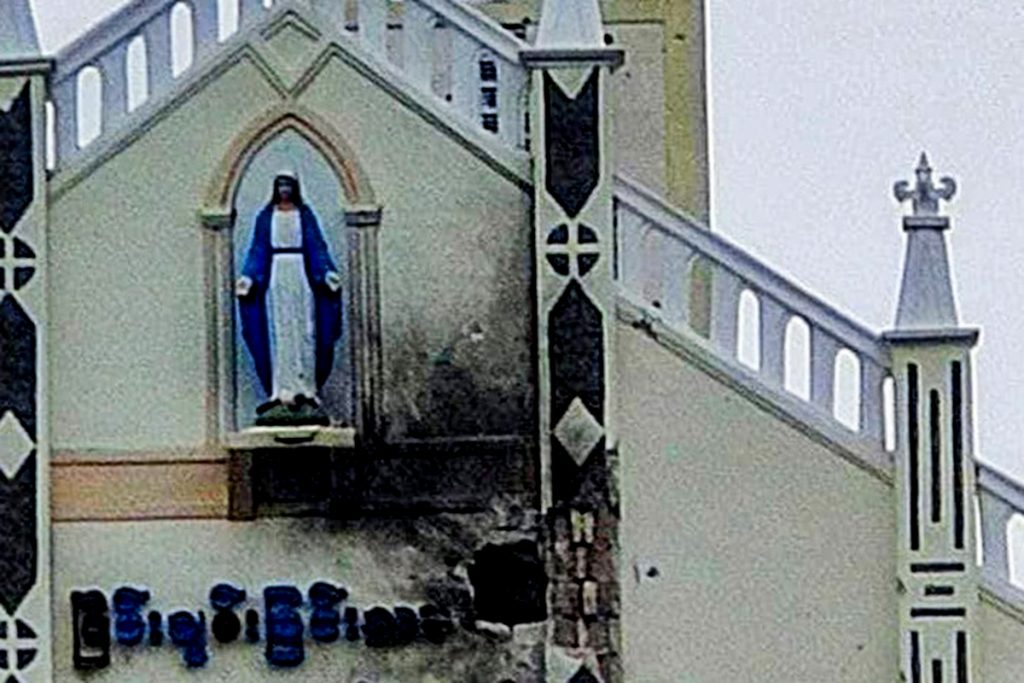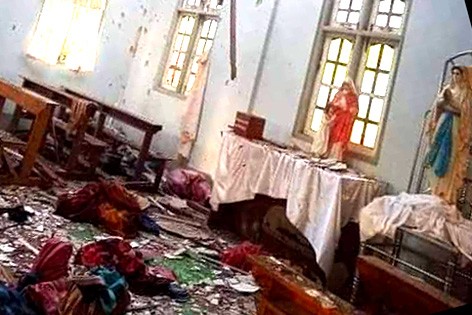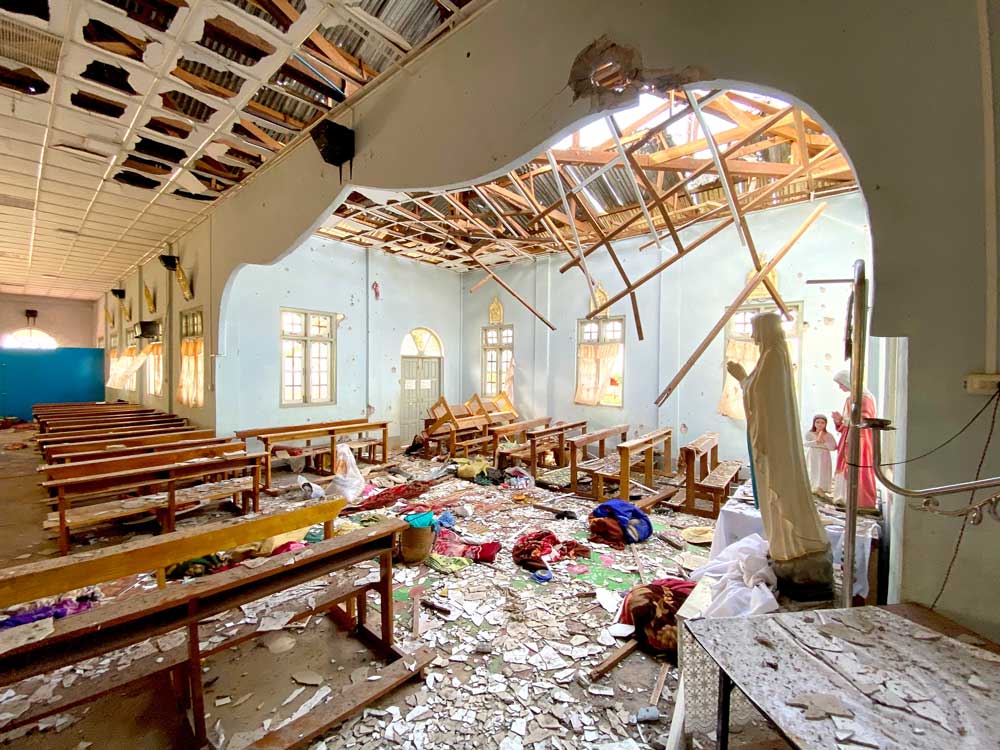About 100 places of worship — monasteries and churches — have been destroyed in two regions and two states in Myanmar more than a year after the military coup in February 2021 that plunged the country into chaos and violence.
Radio Free Asia reported this week that already 15 Buddhist monasteries in Sagaing region, five Buddhist monasteries and one Christian church in Magway region, 62 Christian churches in Chin state, and 13 Christian churches and a mosque in Kayah state have been destroyed.
The report said that in some cases, soldiers raided the buildings and beat locals who had taken shelter there.
Residents of Sagaing region in northwestern Myanmar said several Buddhist monasteries and Christian churches in Ye-U, Mingin, Yinmarbin and Khin-U had been burned down, while other monasteries had been destroyed in Ye-U, Tanze, Kalay, Myaung, Pale and Ayadaw townships.
Zaw Zaw, a resident of Pale township, said Buddhist monks there are being fed by locals offering alms after military troops raided villages and robbed and torched their monasteries.
“They were swearing at the Buddhist monasteries [and] fired several shots into the air,” he said. “They seized cell phones from the monks at the gunpoint. They also robbed civilians who took shelter in the monasteries of their money, gold and jewelry.”
Whenever a military detachment entered Zaw Zaw’s village, residents remained behind closed doors and did not go to the monastery to offer alms to the monks, he said.
“Even Buddhist monks are on the run,” Zaw Zaw added.
Other civilians told RFA that they have been appalled to see bullet holes and other damage from bomb blasts on Buddhist pagodas that serve as landmarks in many small communities.
Locals used to take shelter in monasteries when military units arrived in their villages, but now these places are no longer safe, they said.
Soldiers no longer honor religious buildings in the Buddhist-majority nation because they only want to ensure they maintain power, said a member of the People’s Defense Force (PDF) in Yesagyo township in Magway region who wanted to remain anonymous for safety reasons.
“They are a fascist, terrorist army,” he said. “They no longer venerate the religion. They don’t care about the well-being of the people. They don’t care anything else. All they care about is upholding their power and increasing their wealth.”
“They also prosecute and assault the people,” said the PDF member. “They will do the same thing to the sacred buildings of any religion. They won’t be reluctant to destroy anytime.”

Largely Christian Chin state in western Myanmar has had 62 religious structures destroyed — the largest number of such of any single state or region since the military takeover — including 22 that were burned to ashes, and 20 more destroyed by artillery blasts, according to the Institute of Chin Affairs, a human rights organization.
“We feel that this is result of lacking respects on the people with different religious beliefs,” the organization said in a March 22 statement.
“Many of us have perceptions that they treated us this way because they disrespect to people with different religious beliefs. Losing the mutual respect to other religions is not acceptable, and assaulting the believers of different religions is violation of international laws.”
The Rev. Dennis Ngun Thang Mang said some of the churches destroyed were on fire though there were no armed conflicts in their vicinity, and when he and other asked the military about the blazes, they claimed they didn’t know anything about it.
Additionally, military forces arrested 20 Christian ministers. While a dozen of the captives were later released, four remain in detention and four were killed, the Institute of Chin Affairs said.
In Loikaw, Demoso and Hpruso townships of Kayah state, three Baptist churches, 10 Catholic churches and a mosque have been destroyed.
Military commanders are supposed to avoid hitting religious buildings during armed conflicts, said a Christian religious leader in Loikaw, who requested anonymity for safety reasons.
“During the armed conflicts in Kayah state, most of the bombs from air raids and artillery blasts fell inside the compound of the churches,” he told RFA. “That’s why many churches were destroyed.
“We don’t know why they did it,” he said. “We strongly condemn their actions. We want to appeal them to avoid targeting religious buildings.”

The military regime’s spokesman, Maj. Gen. Zaw Min Tun, denied that army forces targeted religious buildings during armed conflicts.
“The Tatmadaw never targeted any religious buildings,” he said, using the Burmese name for the Myanmar military. “There were incidents of raiding them when we received credible information that terrorists were hiding in the buildings.”
In cases where monasteries and churches were accidentally hit by military fire, soldiers took the lead in helping to repair them, Zaw Min Tun said.
Aung Myo Min, human rights minister of the shadow National Unity Government, said the U.N.’s Geneva Convention lays out guidelines to protect religious building amid armed conflict.
“Religious buildings and sacred places are icons of religious freedom,” he told RFA. “They should not be assaulted or destroyed, even by society’s norms. But targeting religious buildings in armed conflicts and firing weapons at them are horrible acts.”
Copyright © 1998-2020, RFA. Used with the permission of Radio Free Asia, 2025 M St. NW, Suite 300, Washington DC 20036.







